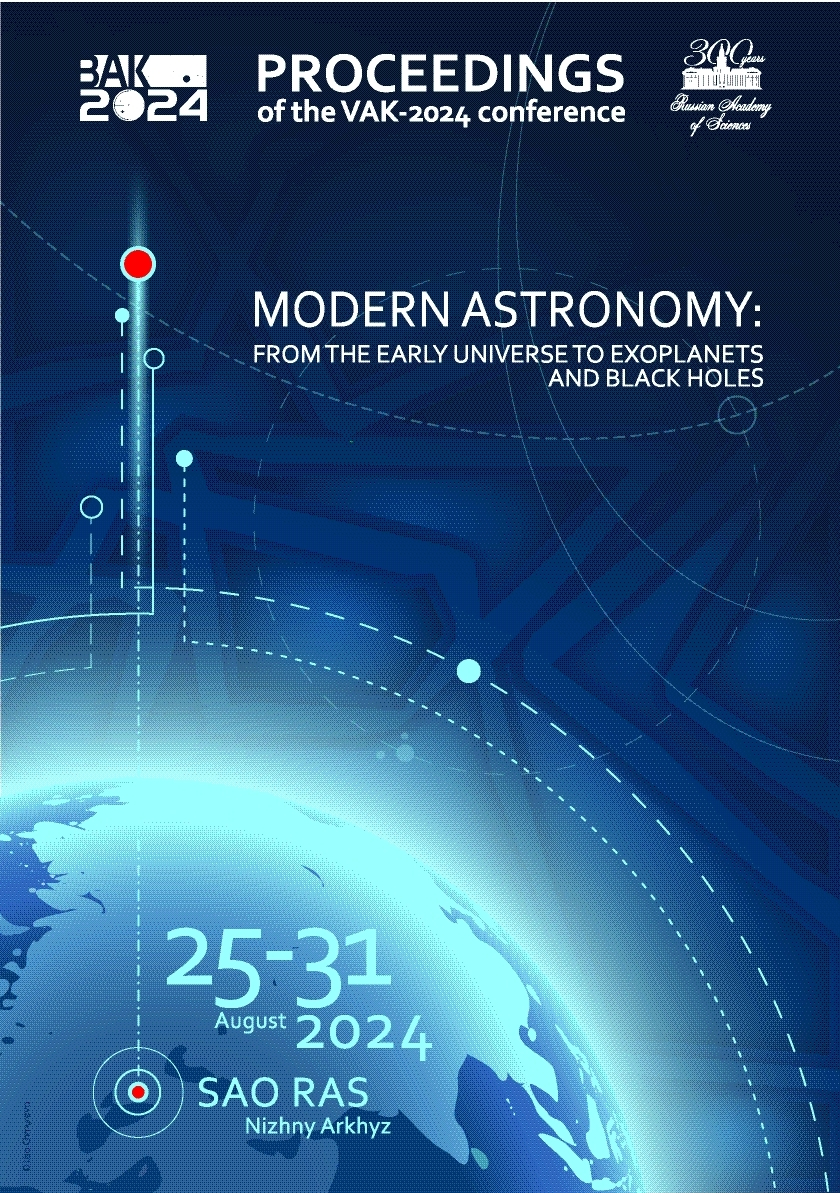UDC 53
UDC 520
UDC 521
UDC 523
UDC 524
UDC 52-1
UDC 52-6
CSCSTI 41.00
CSCSTI 29.35
CSCSTI 29.31
CSCSTI 29.33
CSCSTI 29.27
CSCSTI 29.05
Russian Classification of Professions by Education 03.06.01
Russian Classification of Professions by Education 03.05.01
Russian Classification of Professions by Education 03.04.03
Russian Library and Bibliographic Classification 2
Russian Library and Bibliographic Classification 223
Russian Trade and Bibliographic Classification 614
Russian Trade and Bibliographic Classification 6135
BISAC SCI004000 Astronomy
BISAC SCI005000 Physics / Astrophysics
The project of creating a center of access to solar activity data on the basis of domestic ground-based observations is presented. The center uses a complex of automated systems for recognition of solar activity objects. The observational data are based on the continuous synoptic observations at the Kislovodsk Mountain Astronomical Station (KMAS) of the Central Astronomical Observatory of the Russian Academy of Sciences. The KMAS data we are considering are images of the solar photosphere, chromosphere, corona, and observations of the magnetic fields on the Sun. The creation of the system will allow users to find the data on individual events as well as to conduct statistical studies of a large number of events using an interactive database interface. The concept behind the operation of our computer vision system is that the data will be analyzed almost in real time as soon as they arrive to the KMAS operations center and undergo basic processing. This will allow the system to issue space weather alerts in due time as well as to create images and videos for quick viewing and to archive the solar activity data. The complex and a unique data processing pipeline consisting of hardware and control software that has been created at the KMAS is described. We build software modules that detect, track, and analyze numerous phenomena in real data streams, including flares, filaments, sunspots, active regions, coronal holes, coronal mass ejections (CMEs), coronal oscillations, and jets. Detections of CMEs and filaments are made based on the continuous data from the Solar Patrol Optical Telescopes (SPOT).
Sun: activity, chromosphere, magnetic fields; virtual observatory tools
1. Berezin I.A, Tlatov A.G., Pevtsov A.A., 2023, Astrophysical Journal, 950, p. 100
2. Tlatov A.G., Dormidontov D.V., Kirpichev R.V., et al., 2015, Geomagnetism and Aeronomy, 55, p. 969






